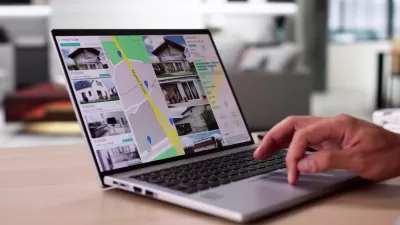In his fourth GeekWire article on downtown recovery, Chuck Wolfe reviews the use of AI imagery in a section of the Seattle Downtown Activation Plan and suggests how it may have missed the mark.
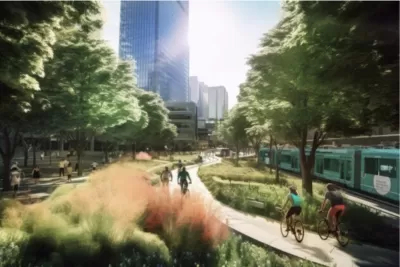
Wolfe's latest article asks whether AI can help transform the future of downtown Seattle, based on Seattle leaders' recent release of images—created by AI—of potential structures and communities that could mold downtown Seattle’s future as part of a broader approach coined “Space Needle Thinking.”
The images, curated by Olson Kundig Architects, include a sports and recreational facility visualized as a colossal glass canopy, sheltering an activity-laden city block.
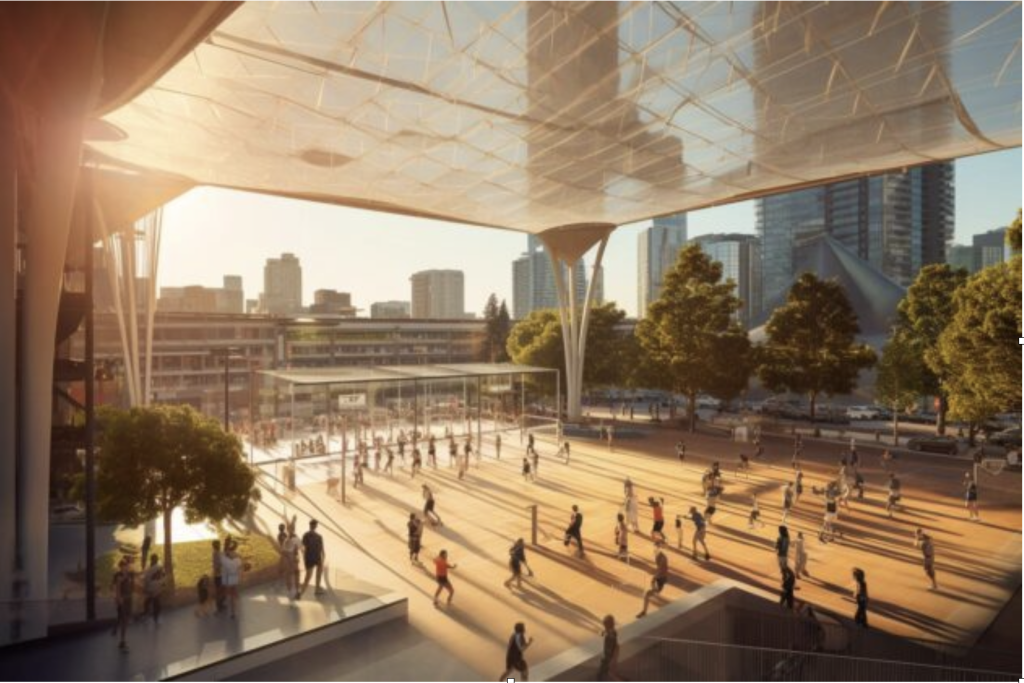
(All images courtesy of Seattle Downtown Activation Plan and Olson Kundig Architects)
Other concepts include a streetcar connecting a continuous arts, culture, and entertainment district, and a new marketplace, akin to Pike Place Market, but focusing on supporting businesses from Black, Indigenous, and Communities of Color.
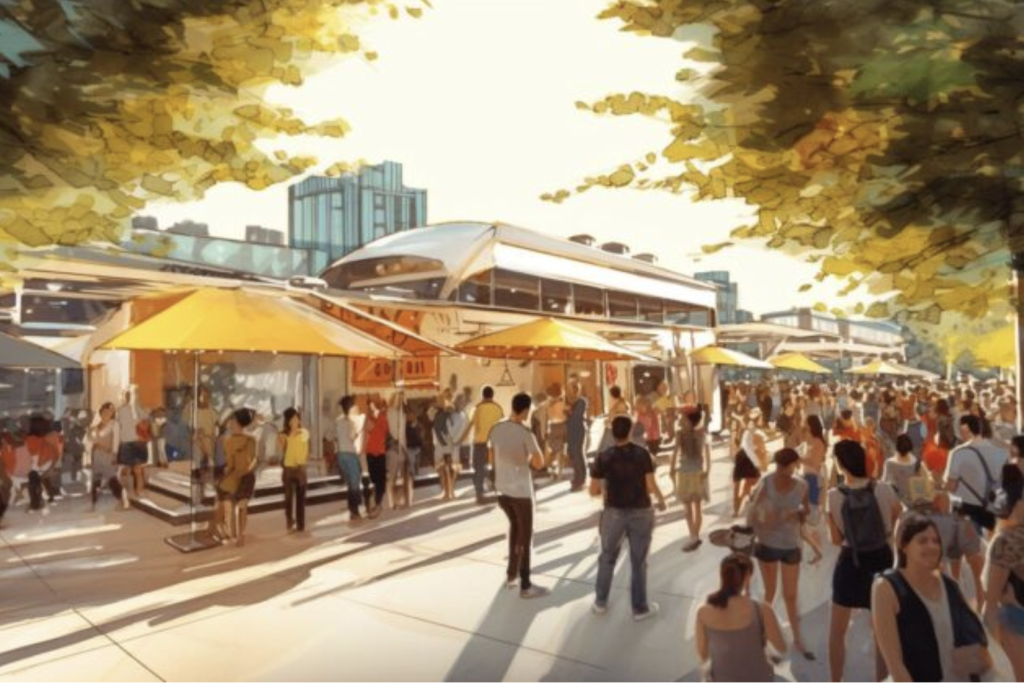
The AI illustrations also depict Westlake Park as a lively public space featuring giant screens broadcasting major sports events.
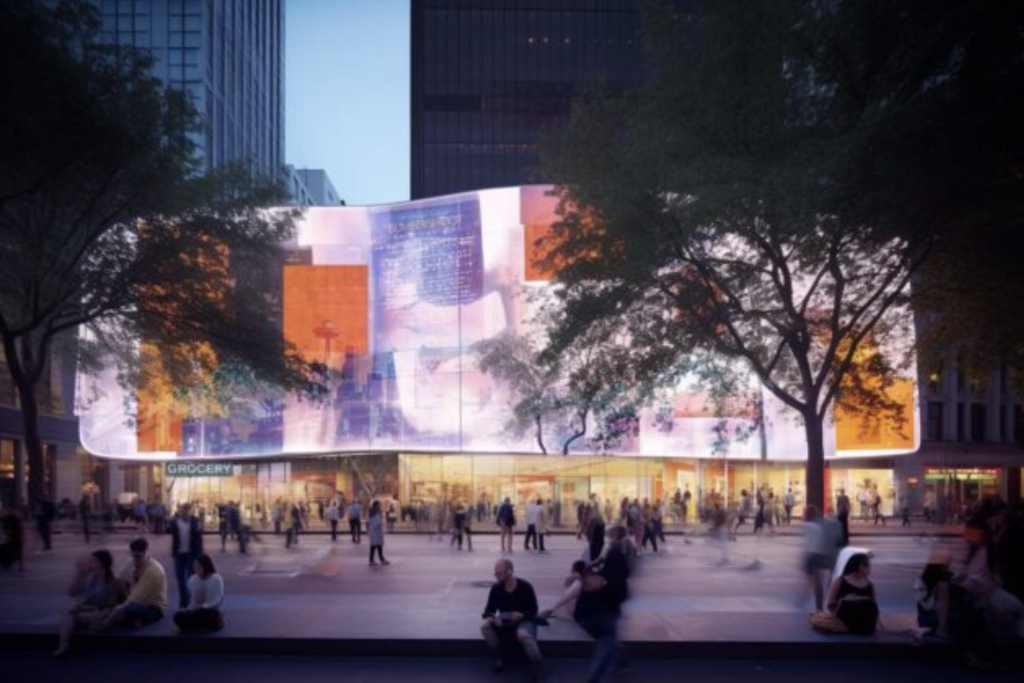
There’s also an “Urban Forest,” potentially covering I-5 with trees or incorporating green spaces inspired by the urban natural beach next to the Olympic Sculpture Park.
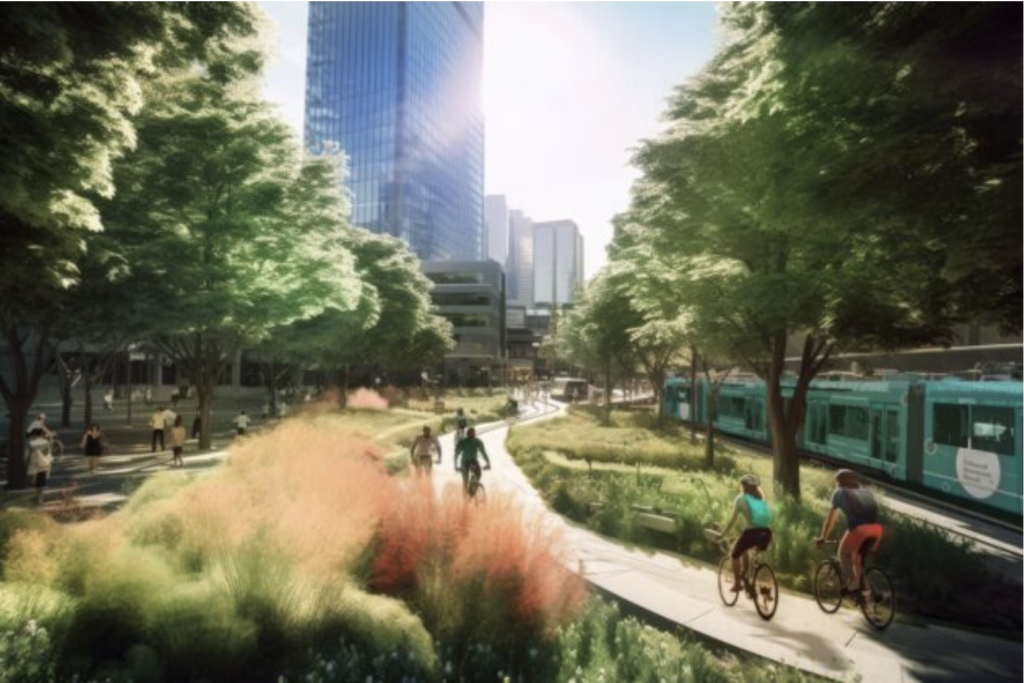
Finally, taking a cue from the University of Washington’s Startup Hall, illustrations show a Makerspace Campus concept, where educational institutions and companies can cooperate to encourage innovation. This facility would gather individuals skilled in physical craftsmanship, like woodworking and robotics, to establish a hub of creativity and collaboration.
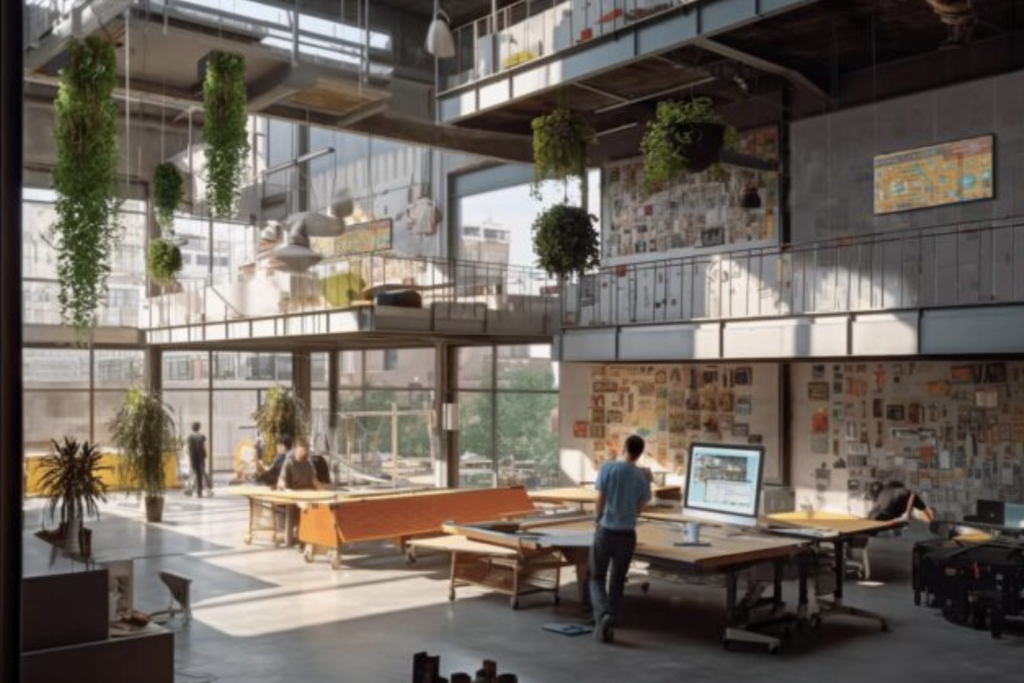
As Planetizen founder Chris Steins recently argued, the use of AI visions can “transcend human biases and traditional thinking,” revealing “fresh perspectives” on urban potential. As Planetizen illustrated last week, Steins generated 26 international city images by ChatGPT and Midjourney, which show a sense of how AI’s creativity and scale may enable revolutionary urban solutions.
But, Wolfe asks, do Seattle “Space Needle Ideas” and AI imagery — at least those so far — meet the mark?
He lists several challenges applicable to such spontaneous or crowd-sourced concepts.
His prior GeekWire articles highlight the need to understand a city’s unique context and character as a predicate to good planning. Somewhat generic AI images arguably fail to capture Seattle’s downtown’s essence, including its history, culture, and community dynamics. He notes how the June 28 rollout of AI-created images — without understanding of the prompts provided — risks neglecting the intricate details that define Seattle’s downtown, potentially leading to cloned developments from elsewhere that don’t reflect the city’s identity.
He discusses four other caveats, including Disregard for Human Experience, Limited Community Engagement, Unforeseen Consequences, and Ethical Considerations. He concludes:
In summary, while AI can provide valuable insights, any overemphasis on enhancing Seattle’s downtown based on AI-inspired images needs more up-front orientation and detail... In order to create a lively and inclusive urban environment, the “Space Needle Thinking” initiative should more particularly combine AI’s potential with local expertise, community involvement, and more detailed documentation of the city’s unique context... City officials and stakeholders will need to keep this in mind to assure downtown Seattle thrives while preserving its identity and meeting its residents’ needs.
FULL STORY: AI envisioned the future of downtown Seattle. Here’s where it fell short.

Study: Maui’s Plan to Convert Vacation Rentals to Long-Term Housing Could Cause Nearly $1 Billion Economic Loss
The plan would reduce visitor accommodation by 25,% resulting in 1,900 jobs lost.

North Texas Transit Leaders Tout Benefits of TOD for Growing Region
At a summit focused on transit-oriented development, policymakers discussed how North Texas’ expanded light rail system can serve as a tool for economic growth.

Why Should We Subsidize Public Transportation?
Many public transit agencies face financial stress due to rising costs, declining fare revenue, and declining subsidies. Transit advocates must provide a strong business case for increasing public transit funding.

How to Make US Trains Faster
Changes to boarding platforms and a switch to electric trains could improve U.S. passenger rail service without the added cost of high-speed rail.

Columbia’s Revitalized ‘Loop’ Is a Hub for Local Entrepreneurs
A focus on small businesses is helping a commercial corridor in Columbia, Missouri thrive.

Invasive Insect Threatens Minnesota’s Ash Forests
The Emerald Ash Borer is a rapidly spreading invasive pest threatening Minnesota’s ash trees, and homeowners are encouraged to plant diverse replacement species, avoid moving ash firewood, and monitor for signs of infestation.
Urban Design for Planners 1: Software Tools
This six-course series explores essential urban design concepts using open source software and equips planners with the tools they need to participate fully in the urban design process.
Planning for Universal Design
Learn the tools for implementing Universal Design in planning regulations.
Ascent Environmental
Borough of Carlisle
Institute for Housing and Urban Development Studies (IHS)
City of Grandview
Harvard GSD Executive Education
Toledo-Lucas County Plan Commissions
Salt Lake City
NYU Wagner Graduate School of Public Service




























